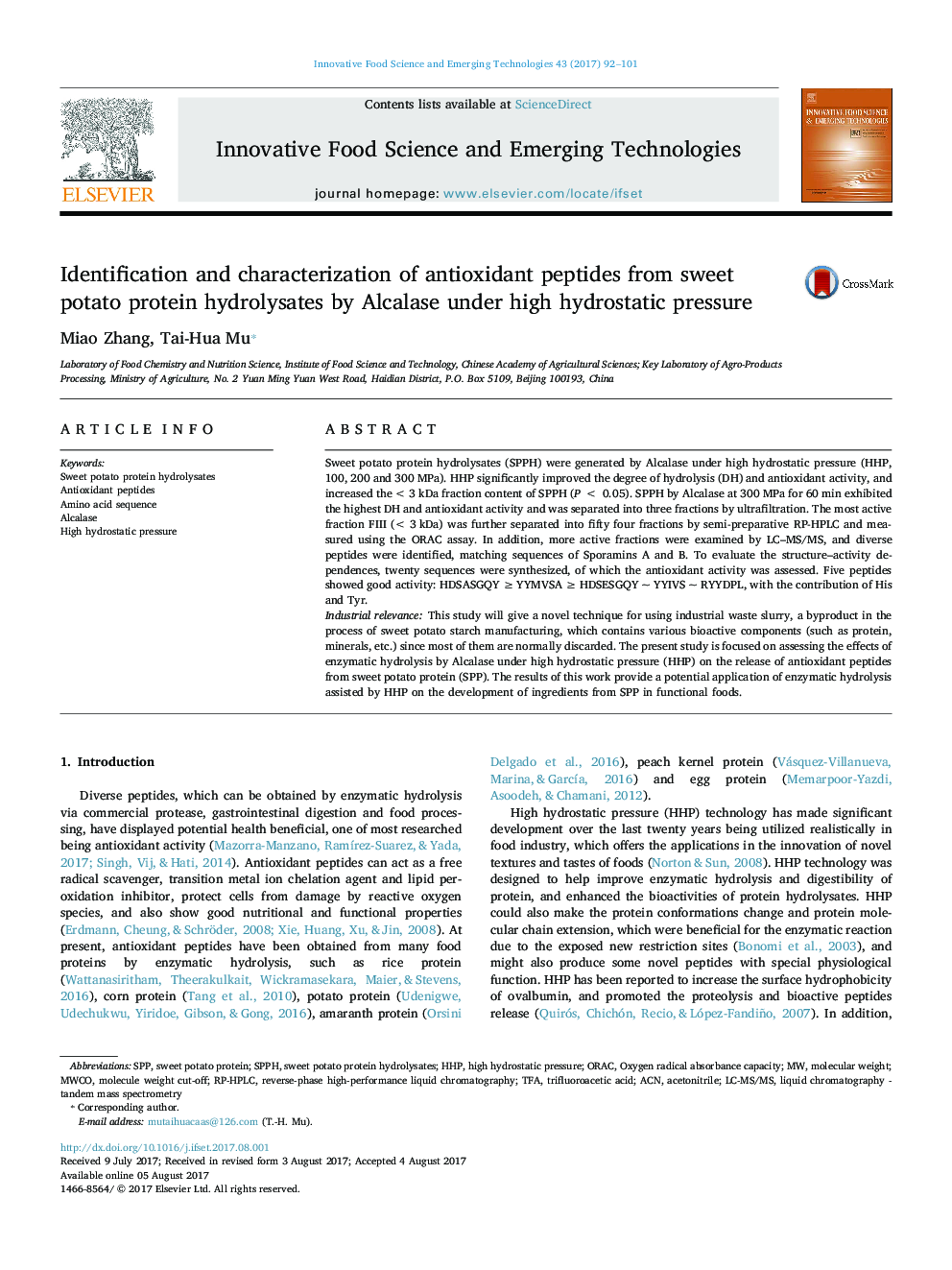| Article ID | Journal | Published Year | Pages | File Type |
|---|---|---|---|---|
| 5521692 | Innovative Food Science & Emerging Technologies | 2017 | 10 Pages |
â¢Sweet potato protein hydrolysates (SPPH) were prepared by Alcalase.â¢High hydrostatic pressure (HHP) improved the enzymatic hydrolysis.â¢SPPH by Alcalase at 300 MPa for 60 min showed the strongest antioxidant activity.â¢Diverse peptides were identified, matching sequences of Sporamins A and B.â¢Five peptides showed good activity with the contribution of His and Tyr.
Sweet potato protein hydrolysates (SPPH) were generated by Alcalase under high hydrostatic pressure (HHP, 100, 200 and 300 MPa). HHP significantly improved the degree of hydrolysis (DH) and antioxidant activity, and increased the < 3 kDa fraction content of SPPH (P < 0.05). SPPH by Alcalase at 300 MPa for 60 min exhibited the highest DH and antioxidant activity and was separated into three fractions by ultrafiltration. The most active fraction FIII (< 3 kDa) was further separated into fifty four fractions by semi-preparative RP-HPLC and measured using the ORAC assay. In addition, more active fractions were examined by LC-MS/MS, and diverse peptides were identified, matching sequences of Sporamins A and B. To evaluate the structure-activity dependences, twenty sequences were synthesized, of which the antioxidant activity was assessed. Five peptides showed good activity: HDSASGQY â¥Â YYMVSA â¥Â HDSESGQY ~ YYIVS ~ RYYDPL, with the contribution of His and Tyr.Industrial relevanceThis study will give a novel technique for using industrial waste slurry, a byproduct in the process of sweet potato starch manufacturing, which contains various bioactive components (such as protein, minerals, etc.) since most of them are normally discarded. The present study is focused on assessing the effects of enzymatic hydrolysis by Alcalase under high hydrostatic pressure (HHP) on the release of antioxidant peptides from sweet potato protein (SPP). The results of this work provide a potential application of enzymatic hydrolysis assisted by HHP on the development of ingredients from SPP in functional foods.
